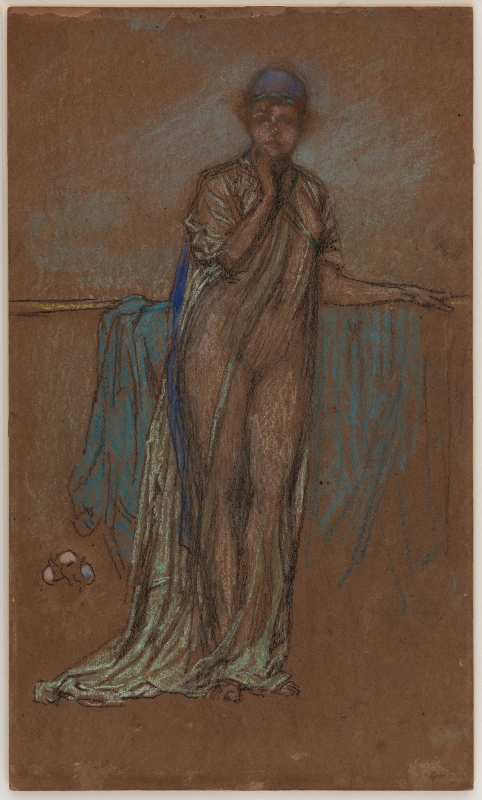Provenance
- 1876: bought from Charles William Deschamps (1848-1908) , London art dealer, by Thomas Way (1837-1915) , according to his son;
- 1885-1887: borrowed by the artist for exhibition, but returned;
- 1905: bought from Way's son, Thomas Robert Way (1861-1913) , by Charles Lang Freer (1856-1919) , Detroit, June 1905;
- 1919: bequeathed to the Freer Gallery of Art.
Further details are given in MacDonald 1995 (cat. rais.) [more] (cat. no. 1074).
Exhibitions
- 1875: possibly Eleventh Exhibition of the Society of French Artists, Deschamps Gallery, London, 1875 (cat. no. unknown).
- 1885: Winter Exhibition, Society of British Artists, London, 1885 (cat. no. 568) as 'Note in Violet and Green'.
- 1905: Memorial Exhibition of the Works of the late James McNeill Whistler, First President of The International Society of Sculptors, Painters and Gravers, New Gallery, Regent Street, London, 1905 (cat. no. 73) as 'The Purple Cap'.
John Calcott Horsley (1817-1903) (nicknamed 'Clothes Horsley') had publicly deplored the moral effect of drawing from the nude on both artist and model. Therefore, according to the Pall Mall Gazette of 8 December 1885, Whistler added the note 'Horsley soit qui mal y pense' to one of his drawings, then on show at the Society of British Artists. The Observer on 29 November 1885 commented that 'a female figure whose excessively slight drapery is the result of some half dozen strokes of the crayon, conveys Mr. Whistler’s contribution to the model controversy in the legend "Horsley soit qui mal y pense".' The St James Gazette on 7 December 1885 asserted that the Horsley note was attached to Harmony in Opal and Violet [M.1075], but according to the Pall Mall Gazette it was attached to 'Note in Violet and Green'. The Pall Mall Gazette called the label 'an indignant protest against the idea that there is any immorality in the nude'. Whistler replied: "Art certainly requires no 'indignant protest' against the unseemliness of senility. "Horsley soit qui mal y pense" is meanwhile a sweet sentiment - why more - and why 'morality'?" 1
These two pastels – Note in Violet and Green and Harmony in Opal and Violet – were apparently similar, and Frederick Wedmore (1844-1921) commented, 'they are very well chosen, and very well placed models, lightly draped and drawn with a delicate vision of what it is most graceful to include and most wise to omit.' 2 Truth described the exhibited 'Note in Violet and Green' as 'a scantily-draped female figure bearing the legend, "Horsley soit qui mal y pense." ' 3 The St James Gazette described it further: 'a girl in diaphanous drapery leans doubtful for a second against the edge of her bath... its modelling is perfect so far as it goes.' 4 This description fits the existing pastel Note in Violet and Green [M.1074] but the colour scheme does not match that pastel very well. Thus it is not absolutely certain to which pastel the note was attached; in any case, the SBA committee asked Whistler to remove the note, which he did.
NOTE: By the terms of Freer's will, this work cannot be lent to another venue.
Last updated: 27th February 2021 by Margaret





